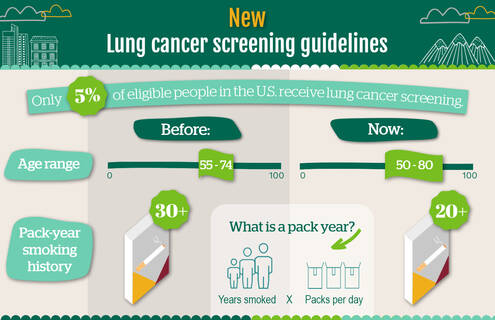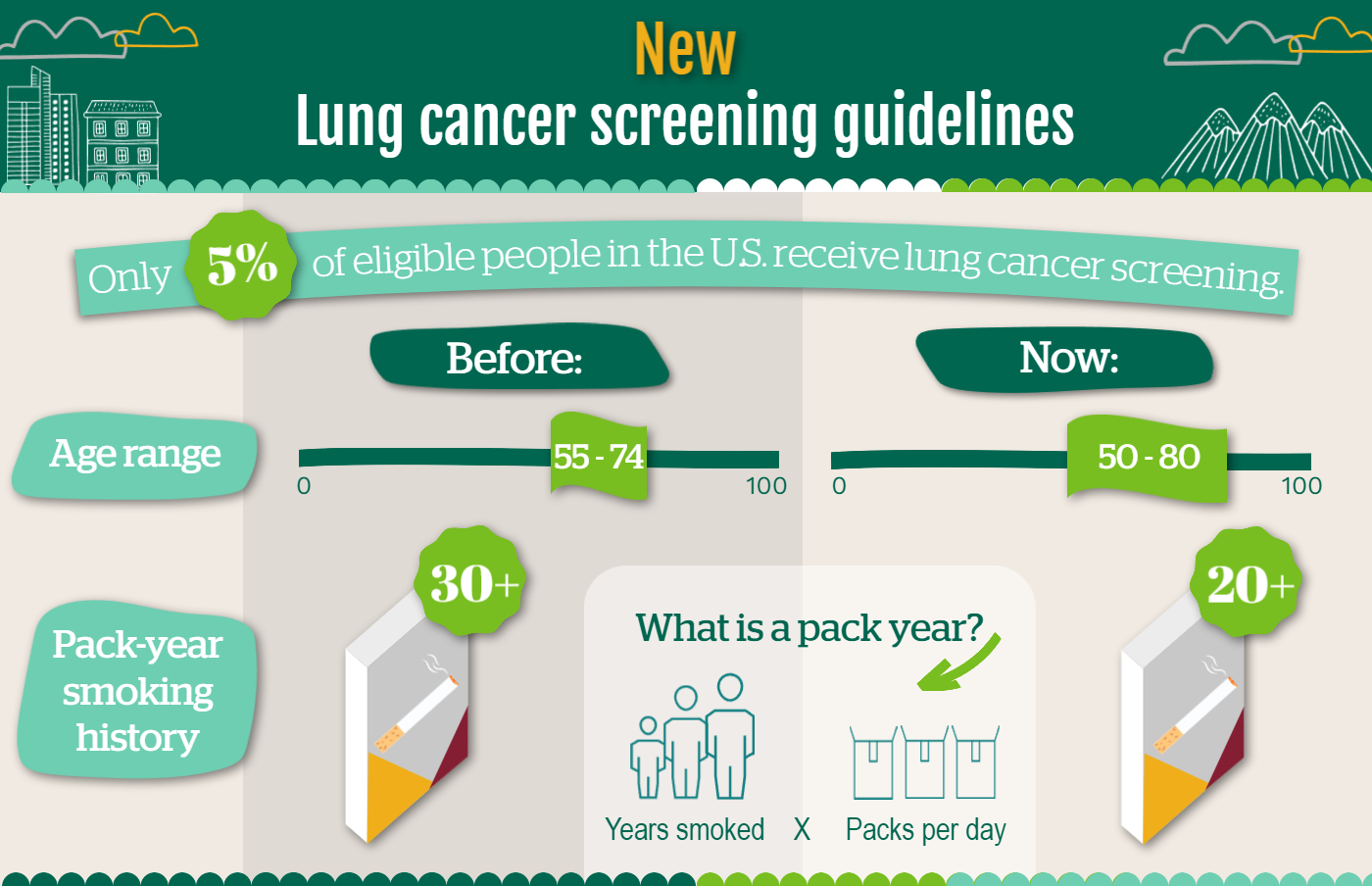
Lung cancer screening could reduce its mortality rate by 20%.
Elliot D. Backer, MDLung cancer is the third most common form of cancer in the U.S. but each year it claims more lives than breast, prostate and colon cancer combined. “A 2011 study showed that lung cancer screening could reduce its mortality rate by 20%,” says Elliot D. Backer, MD, director of Bronchoscopy and Interventional Pulmonology for Dartmouth Health. “If we catch more cases of lung cancer early, we’ll save a lot of lives.”
Lung cancer screening falls behind
Unfortunately, many people who are at highest risk for lung cancer are not being screened for the disease. While 69% of U.S. women aged 40 and above receive breast cancer screening through mammograms, only 5% of eligible people receive lung cancer screening in the U.S. According to the American Lung Association, screening rates in New Hampshire are significantly higher than the national average but, at 7%, still low.
“Lung cancer patients often don’t show symptoms for a long time,” says Backer. “By the time symptoms are noted, lung cancer is often advanced and treatment is more complicated.”
Are you eligible for lung cancer screening?
To learn more about annual lung cancer screening and what it could mean for you:
- Talk to your provider or a pulmonologist who can determine your screening eligibility and explain the benefits of annual screening.
- Contact or be referred to the Pulmonary Nodule Clinic at Dartmouth Cancer Center. Clinic providers offer guidance through the screening process.
On November 1, 2023 , the American Cancer Society released new guidelines for lung cancer screening. By opening the age range and smoking history guidelines, five million more Americans are now able to access annual lung cancer screening through low-dose computed tomography (CT) scans.
Updated guidelines
Now, anyone aged 50 – 80 who has a 20+ pack-year smoking history (see image), even if they have quit smoking, is eligible for lung cancer screening. Previously, only people aged 55 – 74 with a 30+ pack year smoking history (recently updated to 50-77 with a 20 pack-year history) were eligible.
A pack year is the number of years smoked multiplied by the number of packs each day. A person who has smoked 1 pack a day for 20 years has a 20 pack-year history (1 pack a day x 20 years). A person who has smoked 2 packs a day for 10 years also has a 20 pack-year history (2 packs a day x 10 years).
The new guidelines also recommend that patients and providers have a shared decision-making conversation to discuss the benefits and limitations of screening.

“Screening is easy and takes a few minutes,” says thoracic surgeon and director of the Lung Cancer Screening Program, Rian M. Hasson, MD, MPH. “We ask patients a few questions about changes in health since their eligibility was determined. Then, they lie down in an open, donut-shaped CT scanning machine. They don’t have to remove any clothing, shoes or change into a gown and there are no needles or blood draws.”
When the scan shows no areas of concern, patients are referred to their next annual screening. “If we do note areas of concern, patient screens are reviewed by a team of oncologists, radiologists, thoracic surgeons and other cancer specialists involved in diagnosis and treatment. We come to an agreement on the next recommended steps,” says Hasson. “For those with likely benign (not cancerous) or mildly suspicious findings, we may recommend a repeat CT scan in either 3 or 6 months. If findings are very suspicious, we can expedite the work-up and quickly refer them to treatment if cancer is found.”
Hasson points out that lung cancer screening offers a “snapshot-in-time view of how you’re doing,” which makes annual studies important. “The risk of cancer increases over time and is most likely to occur between the ages of 65 and 75,” she says. “It’s important to conduct screening every year until a patient reaches the upper limit of risk because, when it’s found early, lung cancer can be cured.”